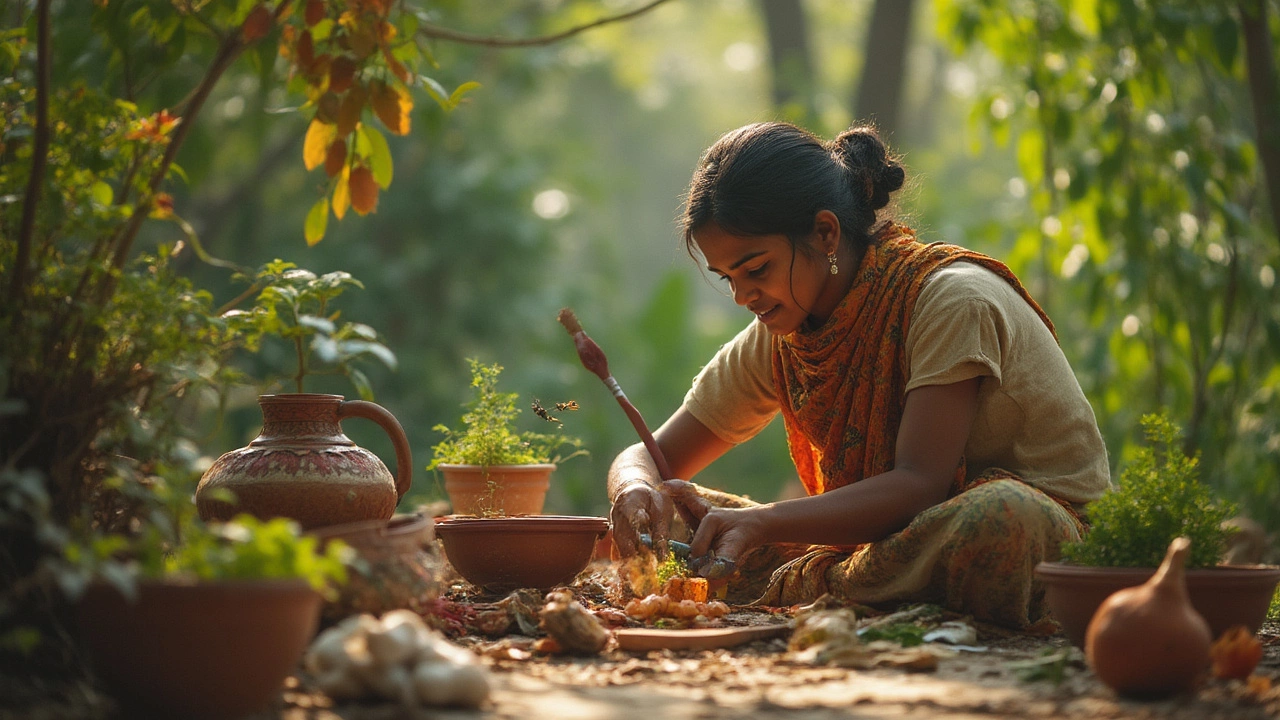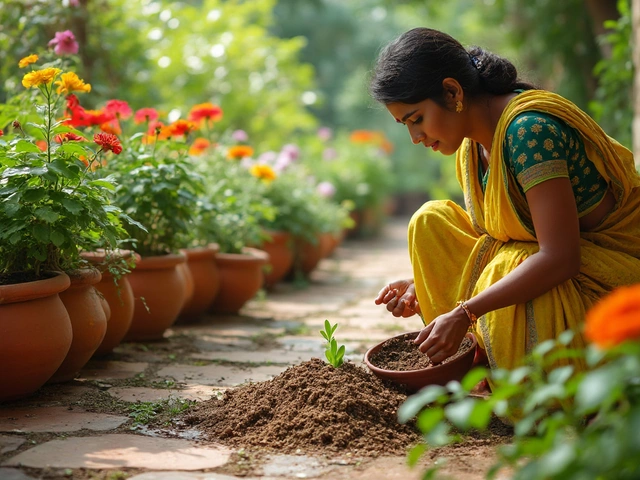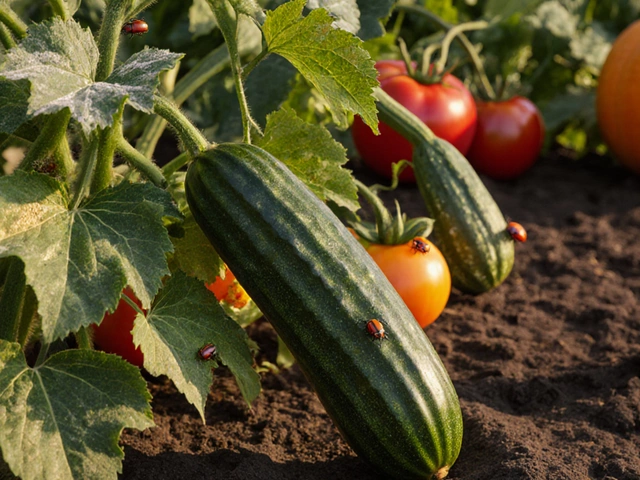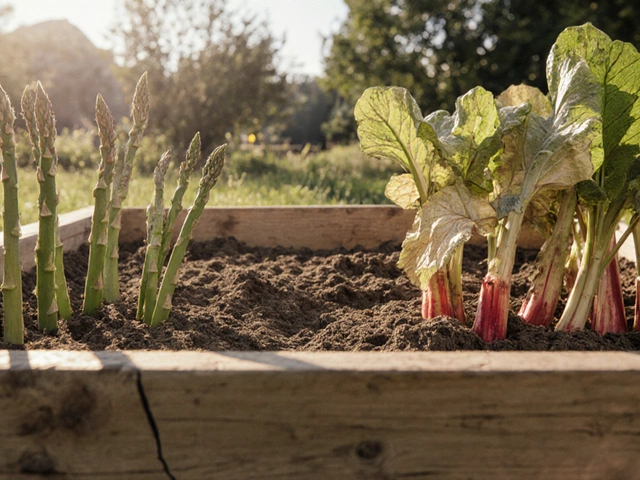You lock eyes with a hungry caterpillar munching away on your tomato plant. Your first thought? Spray and pray. But is it really the only way to fight garden pests? Chemical pesticides might wipe out bugs in a hurry, but they leave a trail—polluted soil, poisoned bees, and that nagging thought about whether your veggies are still safe. If you care about what goes onto your plate, and the fate of humming bees and toads in your garden, it might be time to rethink the trigger-happy spray approach.
Why Move Beyond Chemical Pesticides?
Grab any vegetable from your local supermarket, and you’re likely touching the aftereffects of pesticides. Even after washing, residues sneak onto your home-cooked meals. The U.S. Department of Agriculture tested produce in 2023 and found pesticide remnants on 85% of conventionally grown fruits and vegetables. The kicker? Only a tiny percentage of bugs are pests, but chemical sprays don’t make that distinction. They wipe out the good guys right along with the bad, and that upsets the whole backyard balance.
It’s not just about what’s in your salad. A single bee colony can pollinate up to 300 million flowers every day. The more pesticides in your garden, the fewer bees show up to do their job. In some regions, it’s gotten so bad that almond growers now pay over $300 per hive just to rent bees during bloom season. Long story short: pesticides take working pollinators out of the system—and your crops could suffer. And let’s not overlook the frogs, toads, and friendly ladybugs. These natural pest fighters keep your garden healthy for free, but chemical sprays make it tough for them to stick around.
Pesticides don’t stay put. After spraying, they can drift into nearby yards, seep into water, or blow around in wind. Picture a heavy rain the day after a spray—now your local pond has a dose of bug killer, too. The World Health Organization has linked long-term exposure to certain pesticides with health risks ranging from hormone disruption to cancer in folks who apply them or live nearby. When safer options exist, sticking with chemical sprays just starts to feel old-fashioned—like using lead paint or asbestos in your insulation.
Nature’s Ways: Tried and True Alternatives
So, what really works when you’re ditching spray bottles and chemical dusts? It comes down to seeing your garden as an ecosystem, not a factory. The moment you trust nature’s own fixes, you start saving money and boosting those homegrown flavors. Here’s the lowdown on proven pest-fighting alternatives that really do the job:
- Companion planting: Plant basil next to tomatoes and you’ll send tomato hornworms packing. Nasturtiums lure aphids away from beans, and marigolds attract predatory insects that bite into tiny worms and beetles. It’s nature’s low-tech pest repellent, and it looks good, too.
- Physical barriers: Fine mesh row covers keep cabbage moths and carrot flies off your veggies without lifting a spray can. Copper tape blocks snails and slugs. For larger invaders, a simple fence—think chicken wire—keeps out rabbits and deer.
- Hand-picking and monitoring: Sometimes, the oldest methods are still the best. Catching Colorado potato beetles or Japanese beetles by hand and tossing them in soapy water can make a huge dent, especially in smaller backyard gardens.
- Beneficial insects: Ladybugs, lacewings, and parasitic wasps are all-star pest eaters. Many garden supply shops sell live larvae, ready to hunt down aphids and caterpillars within days of release. Just avoid broad-spectrum sprays, or you’ll wipe them out right after release.
- Neem oil and soap sprays: Neem oil, sourced from the seeds of the neem tree, messes up pest insects’ hormones and prevents them from eating or reproducing. Mix it with a little castile soap, spray in the evening (to avoid harming bees), and you’ll knock down populations of mites, aphids, and whiteflies. It won’t poison pollinators or earthworms.
- Diatomaceous earth: Made from the fossilized shells of microscopic water creatures, this powder cuts into the exoskeletons of soft-bodied bugs like slugs and ants. Sprinkle a fine layer at the base of vulnerable plants after watering.
Gardeners in Montana noticed a 75% drop in aphid infestations when they planted companion flowers among their lettuce and kale, cutting down on spray routines to just a backup once or twice per season. Some organic vineyards in California cut pest outbreaks by over half with smart ground cover and releasing tiny wasps. When you start stacking these natural methods, pests have a harder time finding a way in.

Building a Resilient Garden Ecosystem
No one trick keeps every bug away forever, and that’s the point: diversity brings balance. It starts with healthy soil. Compost heaps, cover crops, and mulch keep the soil rich and full of life. Plants grown in healthy soil develop tougher cell walls, making it harder for bugs to chew through. Healthy soil is teeming with microscopic fungi and bacteria that compete with root-munching grubs, so you get fewer problems from the ground up.
Rotate your crops each year. Pests often lay eggs in ground near their favorite food. Growing tomatoes in the same spot every season sets you up for repeat infestations. Switch up planting locations, and you make life harder for soil-dwelling bugs. Some gardeners go as far as charting their planting arrangements year after year. It may sound nerdy, but it pays off in fewer sick, bug-eaten plants.
Crowded gardens attract trouble. Overplanting cuts airflow and creates damp, bug-friendly hideouts. Space out your beds, prune older leaves, and thin seedlings so sunlight and breezes can keep things dry. Fungi and pests hate a dry, breezy spot. If you have raised beds, move them around sometimes, or add a new bed for less prone crops. The more you mix things up, the less likely a single pest wipes everything out.
Let’s talk numbers. A single adult ladybug will eat up to 5,000 aphids in its life. Lacewing larvae chow down on about 200 insect pests per week. An acre of healthy, organic soil can house up to 1 trillion beneficial bacteria. The stats are pretty convincing: build a habitat for the helpers, and you’ll rarely reach for a spray bottle again.
| Natural Pest Control Method | Pest Types Controlled | Average Effectiveness Rate | Best Season for Use |
|---|---|---|---|
| Companion Planting | Aphids, hornworms, beetles | 60%–75% | Spring–Late Summer |
| Neem Oil Spray | Aphids, mites, whiteflies | 80% | Late Spring–Early Fall |
| Physical Barriers | Caterpillars, beetles, birds | 90% | All Year |
| Beneficial Insects | Aphids, whiteflies, mealybugs | 70%–85% | Late Spring–Early Fall |
One big tip: don’t expect zero bugs. A few holes in your kale or chewed bean leaves are normal, not a crisis. Perfection is overrated. Watch for patterns—if you see tons of one pest, then it’s time to intervene with the tools above. For tiny problems, a quick squirt of water or some soapy spray is usually enough to tip the balance.
How to Make the Switch—And Stick With It
Switching to natural or organic pest control sounds risky until you try it. The key? Give it time. When you first stop using chemical sprays, expect a rough patch as the garden’s balance resets. Pests may surge before natural predators get established, but keep your cool. Most gardeners find things even out after one season.
Start small. Try companion planting in one bed, or experiment with neem oil spray only when you spot early pest outbreaks. Track what works and what doesn’t: jot notes about what you’ve planted, when you saw certain bugs, and which plants stayed clean. There are dozens of free apps for garden tracking, or a cheap spiral notebook does the trick, too.
Buy a hand lens or magnifying glass. Spotting pest eggs early helps you avoid surprise outbreaks that get out of hand. “Early detection, early action” is the approach market gardeners use, since smaller infestations are always easier to fix than a big mess. If you notice a bug you don’t recognize, snap a photo and ask local gardening forums or Facebook groups. Local advice is worth its weight in gold, since pest problems vary by region.
Choose plants that match your climate and soil. Struggling plants send out stress signals that invite pests in like a buffet. Pick tough local varieties, and you’ll face half as many pest problems. Many seed packets and nursery tags now mention pest resistance—look for those details when choosing what to grow next season.
It helps to make friends in the gardening community. Swapping stories—and even seeds—opens up new strategies you might not find in a book or a YouTube video. Seasoned gardeners know which rodents tunnel after carrots, what flowers really keep bugs away, and which sprays are a bust. People love to share what worked and what flopped, and you can skip years of mistakes just by joining the conversation.
The biggest bonus: your harvest will almost always taste better. Crops grown with diverse, eco-friendly methods build stronger defenses and richer flavors. Tomatoes from resilient plants, grown without harsh chemicals, just taste sweeter and juicier. That’s not some advertisement—it’s the difference between a homegrown, sun-warmed cherry tomato and the supermarket version that ships for days across the country.
Ready to drop the old-school pesticides and try something better? Every garden that leans into natural pest control joins a quiet revolution, swapping spray cans for soil health, bugs for biodiversity, and frustration for food you can really trust. Once you see the rebound—more butterflies, more busy bees, fewer sick plants—it’s the kind of change you won’t want to reverse.





